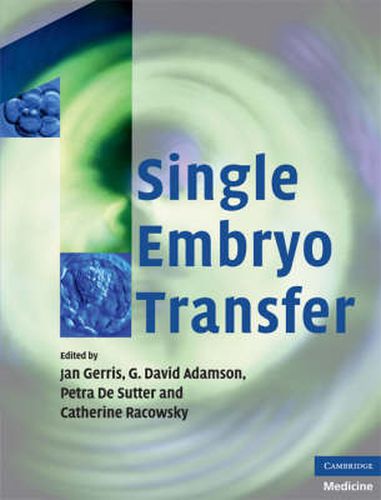Readings Newsletter
Become a Readings Member to make your shopping experience even easier.
Sign in or sign up for free!
You’re not far away from qualifying for FREE standard shipping within Australia
You’ve qualified for FREE standard shipping within Australia
The cart is loading…






Multiple pregnancies are the most frequent and serious complication of assisted reproduction. Both high-order multiple and twin pregnancies entail a number of medical and economic outcomes that affect the children, the mother, the parents, the families, and society as a whole. Limiting the number of embryos to transfer is the only method available to decrease the incidence of multiple pregnancies. Single Embryo Transfer reviews the advantages and limitations of this approach to assisted reproduction. The crucial issue of selecting the best embryo will be reviewed in detail. All clinical issues involved in setting up and running an SET programme will be covered, including important topics such as cryopreservation of embryos, embryo donation, and patient counselling. The final chapters on future SET trends in Europe and North America are written by leading figures in the IVF world. The book is of interest to physicians, embryologists, nurses, insurers, politicians, ethicists and patients.
$9.00 standard shipping within Australia
FREE standard shipping within Australia for orders over $100.00
Express & International shipping calculated at checkout
Multiple pregnancies are the most frequent and serious complication of assisted reproduction. Both high-order multiple and twin pregnancies entail a number of medical and economic outcomes that affect the children, the mother, the parents, the families, and society as a whole. Limiting the number of embryos to transfer is the only method available to decrease the incidence of multiple pregnancies. Single Embryo Transfer reviews the advantages and limitations of this approach to assisted reproduction. The crucial issue of selecting the best embryo will be reviewed in detail. All clinical issues involved in setting up and running an SET programme will be covered, including important topics such as cryopreservation of embryos, embryo donation, and patient counselling. The final chapters on future SET trends in Europe and North America are written by leading figures in the IVF world. The book is of interest to physicians, embryologists, nurses, insurers, politicians, ethicists and patients.